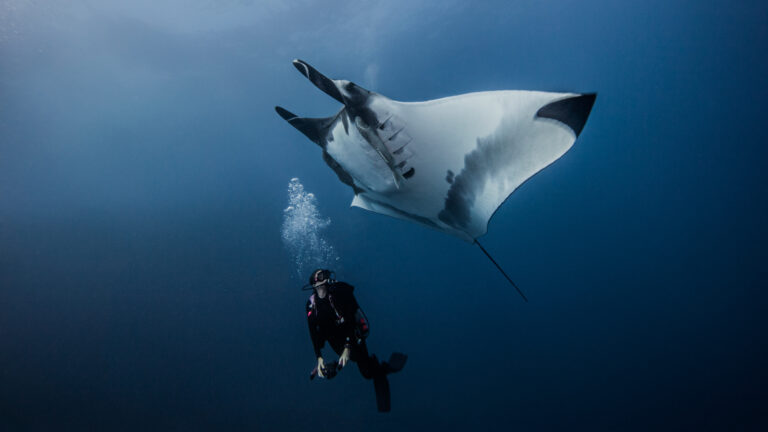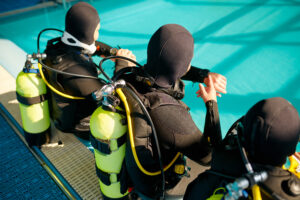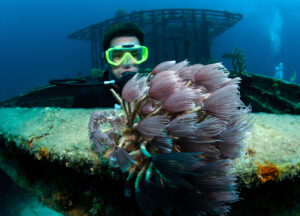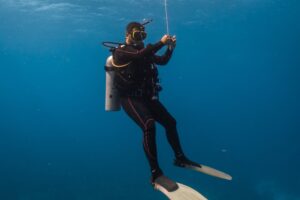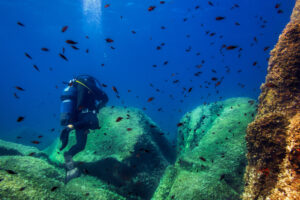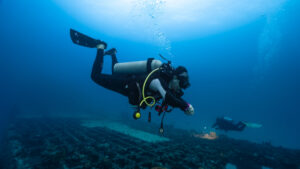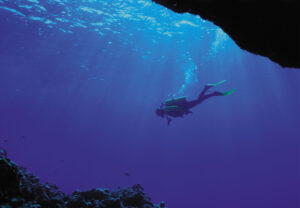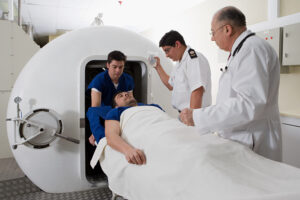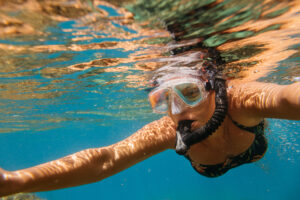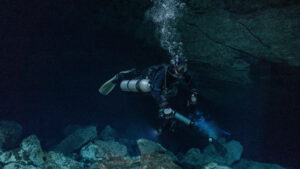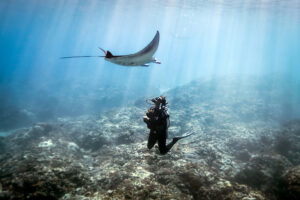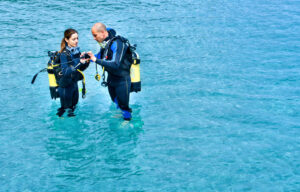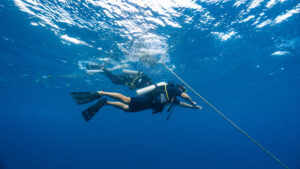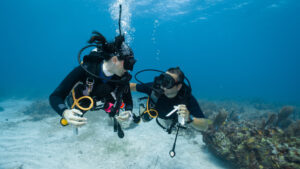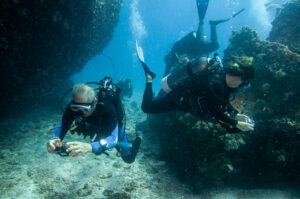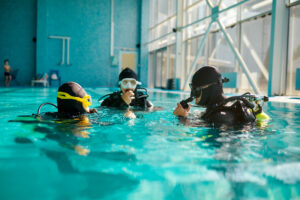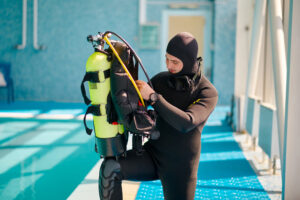What is an Adjustable Buoyancy Life Jacket?
An adjustable buoyancy life jacket (ABLJ) is a crucial piece of equipment in scuba diving, designed to help divers manage their buoyancy underwater. Buoyancy control is vital for a safe and enjoyable diving experience, as it allows divers to maintain neutral buoyancy, ascend, or descend smoothly. The ABLJ combines the functionality of a life jacket with the capability to adjust buoyancy, making it an essential tool for divers of all levels. This article will delve into the history, design, types, operational use, safety features, and overall impact of ABLJs on scuba diving.
History and Development of ABLJ
The history of buoyancy control devices in scuba diving dates back to the early days of the sport. Initially, divers relied on basic flotation devices that were cumbersome and offered limited control over buoyancy. The invention of the first buoyancy compensator in the 1960s marked a significant advancement. These early models were simple, vest-like devices that allowed divers to add or release air manually.
Throughout the 1970s and 1980s, technological advancements led to the development of more sophisticated buoyancy control devices. Manufacturers began experimenting with different materials and designs to enhance functionality and comfort. The introduction of the adjustable buoyancy life jacket revolutionized buoyancy control by providing divers with greater precision and ease of use. The ABLJ combined the principles of a life jacket with the ability to fine-tune buoyancy, making it a versatile and indispensable tool for divers.
The ABLJ’s evolution continued with the integration of advanced materials such as durable, lightweight fabrics and more efficient inflation systems. These improvements not only increased the reliability and safety of the devices but also made them more comfortable and user-friendly. Today, ABLJs are standard equipment for divers, offering a range of features tailored to different diving environments and preferences.
Design and Mechanism
The design of an adjustable buoyancy life jacket is centered around providing divers with precise control over their buoyancy. A typical ABLJ consists of several key components, including an inflatable bladder, an inflation mechanism, and a series of valves for air release. The inflatable bladder is usually made from a durable, puncture-resistant material such as nylon or polyurethane, ensuring it can withstand the rigors of underwater use.
The inflation mechanism is a critical part of the ABLJ’s design. It typically includes an oral inflation tube, a low-pressure inflator connected to the diver’s air supply, and dump valves for releasing excess air. The oral inflation tube allows divers to manually add air to the bladder by blowing into it, providing a simple and reliable method of buoyancy adjustment. The low-pressure inflator, on the other hand, is connected to the diver’s regulator system, enabling quick and easy inflation with the press of a button.
Valves are strategically placed on the ABLJ to allow for controlled air release. These dump valves can be located at various points on the jacket, such as the shoulder and lower back, enabling divers to vent air regardless of their position in the water. This feature is particularly useful when adjusting buoyancy during ascents and descents or when fine-tuning neutral buoyancy.
In addition to the core components, ABLJs often come with integrated weight systems, D-rings for attaching accessories, and padding for added comfort. The combination of these features ensures that divers can maintain optimal buoyancy while enjoying a comfortable and streamlined diving experience. The design and mechanism of ABLJs have been refined over the years to offer divers a high degree of control and safety, making them an indispensable part of modern scuba diving equipment.
Types of ABLJs
Adjustable buoyancy life jackets come in various models and designs, each tailored to specific diving needs and preferences. The three main types of ABLJs are vest-style, hybrid, and back-inflate models, each offering distinct features and benefits.
Vest-style ABLJs are the most common and are characterized by their wrap-around design. They provide even buoyancy distribution around the diver’s torso, making them suitable for recreational diving and beginners. The vest-style ABLJ is easy to use, with controls typically located at the front for quick access. This design ensures a comfortable fit and good stability, particularly at the surface.
Hybrid ABLJs combine elements of both vest-style and back-inflate designs. These jackets offer the best of both worlds, providing the comfort and stability of a vest-style ABLJ with the streamlined profile of a back-inflate model. Hybrid ABLJs are versatile and can be used for a wide range of diving activities, from recreational to more advanced technical dives. They are favored by divers who want a balance between stability and freedom of movement.
Back-inflate ABLJs are designed with the bladder located primarily on the back, offering a more streamlined profile and greater freedom of movement underwater. This design reduces bulk at the front of the jacket, allowing for better positioning and less drag. Back-inflate ABLJs are popular among technical divers and those who engage in deeper or more challenging dives. However, they may require more practice to master buoyancy control, especially at the surface where they can cause a slight forward tilt.
Each type of ABLJ has its own advantages and is suited to different diving styles and conditions. Divers can choose the model that best fits their needs, ensuring they have the appropriate buoyancy control and comfort for their underwater adventures.
Operational Use
Using an adjustable buoyancy life jacket effectively requires understanding its features and practicing proper techniques. When preparing for a dive, divers should thoroughly check their ABLJ to ensure it is in good working condition. This includes inspecting the inflation mechanisms, dump valves, and any integrated weight systems. Proper maintenance and pre-dive checks are crucial for ensuring safety and functionality.
Once in the water, divers can adjust their buoyancy by adding or releasing air from the ABLJ’s bladder. Adding air increases buoyancy, helping the diver ascend, while releasing air decreases buoyancy, allowing for a controlled descent. The goal is to achieve neutral buoyancy, where the diver neither sinks nor floats, making it easier to move effortlessly through the water. This state of balance is essential for conserving energy and reducing the risk of accidental damage to underwater environments.
During the dive, divers must continuously monitor and adjust their buoyancy to accommodate changes in depth and conditions. For example, as a diver descends, the increased pressure compresses the air in the ABLJ, reducing buoyancy. Conversely, as the diver ascends, the air expands, increasing buoyancy. Regularly venting excess air during ascents helps maintain control and prevents rapid, uncontrolled rises to the surface, which can be dangerous.
Proper weight distribution is also important when using an ABLJ. Divers should position weights evenly to maintain balance and stability. Integrated weight systems in ABLJs make it easier to manage weights, but divers should practice emergency weight release techniques to be prepared for any situation. Mastery of these operational practices ensures that divers can safely and effectively use their ABLJ to enhance their underwater experience.
Safety Features and Considerations
Adjustable buoyancy life jackets are designed with several safety features to protect divers and enhance their underwater experience. One of the primary safety features is the quick-release mechanism for integrated weight systems. In an emergency, divers can quickly jettison their weights to achieve positive buoyancy and ascend to the surface rapidly. This feature is crucial for dealing with unexpected situations, such as equipment failure or rapid onset of decompression sickness.
Another important safety consideration is the presence of multiple dump valves. These valves allow divers to release air from the ABLJ in various positions, ensuring that they can always adjust buoyancy regardless of their orientation in the water. Proper use of these valves helps maintain control during ascents and prevents rapid, uncontrolled rises.
ABLJs also often include safety whistles and reflective strips, which are essential for signaling and visibility at the surface. In the event of separation from the dive group or an emergency, these features increase the chances of being located and rescued. The ABLJ’s bright colors and reflective elements enhance visibility, making it easier for rescue teams to spot divers in distress.
Maintaining the ABLJ is vital for ensuring its safety and reliability. Regular inspections and maintenance, such as checking for leaks, ensuring the integrity of the inflation mechanisms, and cleaning the valves, help prolong the life of the equipment and prevent malfunctions. Divers should follow the manufacturer’s guidelines for maintenance and perform routine checks before each dive.
Proper training and practice are essential for using an ABLJ safely. Divers should familiarize themselves with the specific features of their jacket and practice buoyancy control in a controlled environment before venturing into more challenging dives. Understanding how to use the quick-release mechanisms, dump valves, and inflation systems effectively can make a significant difference in emergency situations.
Impact on Scuba Diving
The introduction of adjustable buoyancy life jackets has had a profound impact on the practice of scuba diving. Before the widespread use of ABLJs, divers faced significant challenges in maintaining buoyancy, which often led to increased air consumption and reduced dive times. The ability to control buoyancy precisely has not only improved safety but also enhanced the overall diving experience.
ABLJs have made diving more accessible to a broader range of people by reducing the physical demands associated with buoyancy control. This has encouraged more individuals to take up diving as a hobby and has contributed to the growth of the diving community. The increased comfort and control provided by ABLJs have allowed divers to explore underwater environments more thoroughly and with greater confidence.
The development of specialized ABLJs for different types of diving, such as technical and recreational, has also expanded the possibilities for underwater exploration. Technical divers, who often engage in deep or complex dives, rely on the advanced features of ABLJs to manage their buoyancy precisely and safely. Recreational divers benefit from the ease of use and comfort provided by these devices, allowing them to focus on enjoying their dives.
In addition to enhancing individual diving experiences, ABLJs have also contributed to environmental conservation efforts. Improved buoyancy control helps divers avoid accidental contact with fragile underwater ecosystems, such as coral reefs. By minimizing physical disturbances, divers using ABLJs can help preserve these environments for future generations.
Key Takeaways
Adjustable buoyancy life jackets have revolutionized scuba diving by providing divers with precise control over their buoyancy. From their early development to the advanced models available today, ABLJs have significantly improved the safety and enjoyment of diving. Understanding their design, proper use, and safety features is essential for maximizing their benefits. By offering greater comfort, control, and environmental protection, ABLJs continue to play a crucial role in the world of scuba diving.

